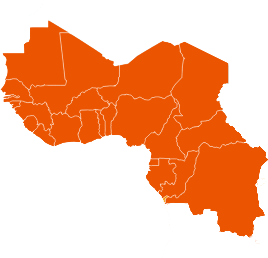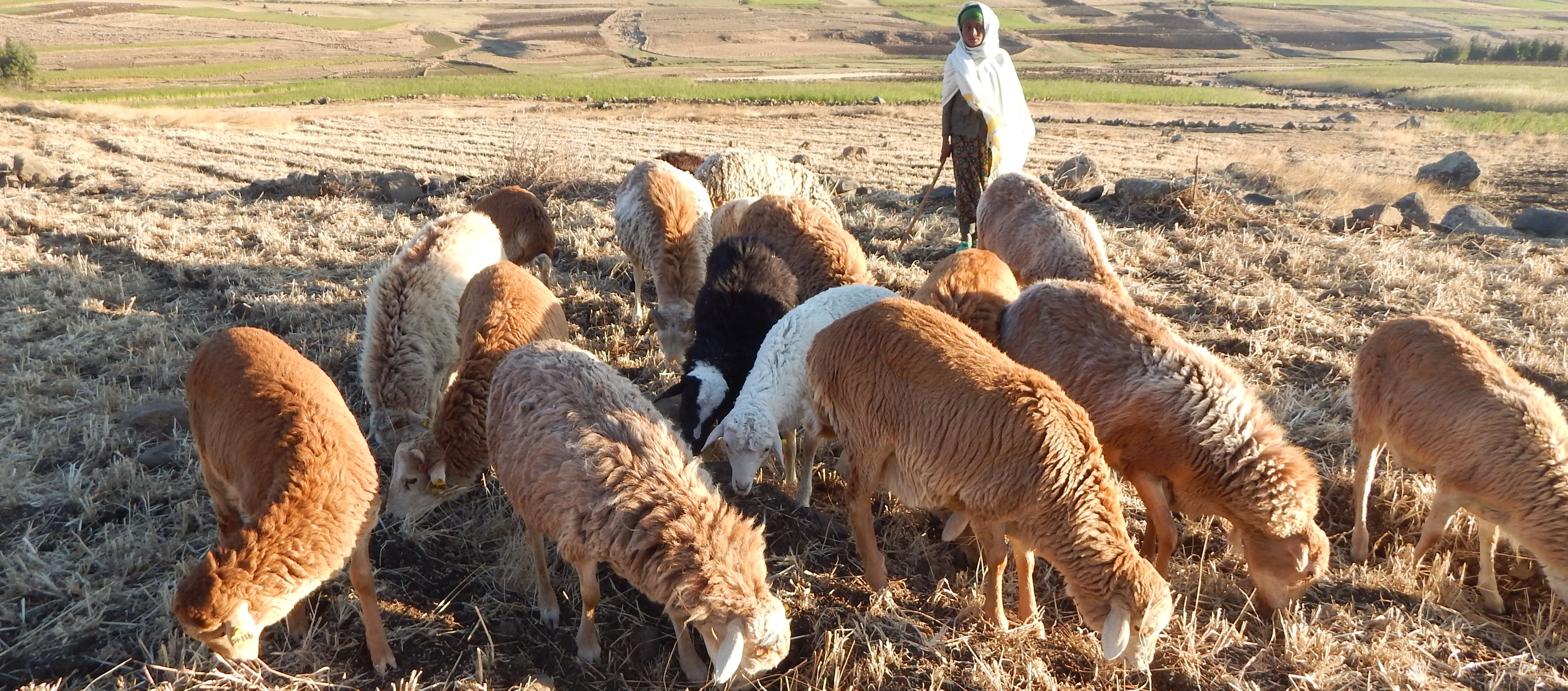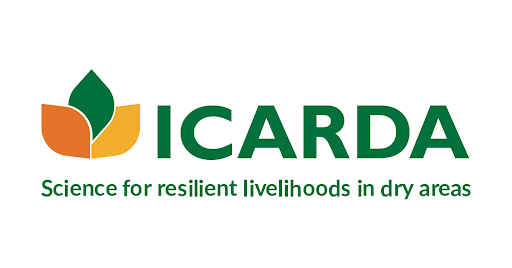Community-Based Breeding Programmes
“We have seen a transformation from subsistence farming to a market-oriented sheep production system. We are now a self-sustaining private sector!”
BACKGROUND
In Ethiopia, communities are struggling to increase animal production because of the lack of technical capacity, poor‐quality feeds, diseases leading to lamb mortality and underdeveloped markets. With the help of community-based breeding programmes that build local capacities, farmers can increase their livelihoods by increasing animal productivity.
WHAT’S INVOLVED
Sustained genetic improvement of indigenous breeds : CBBPs include not only innovative genetic and production systems but also unique management practices that are participatory, cheap and farmer-owned
Training and building local capacity: CBBPs include trainings that focus on transferring local knowledge about indigenous breeds so that farmers can sustain the solution in the future
Business development : Farmers are trained in sheep husbandry, ration balancing and formulation, entrepreneurship and marketing.
EXPLORE THIS SOLUTION
Community-based breeding programmes:
- Sustainably tackle the productivity gap in small ruminants and contribute to increasing farmers’ livelihoods.
- Offer trainings and the transfer of indigenous knowledge to develop local capacities.

Countries involved
Ethiopia, Sudan, Iran, Uganda, Tanzania, Liberia, Malawi, South Africa, Tunisia and Burkina Faso, and Argentina, Bolivia
Project partners
International Livestock Research Institute, International Centre for Agricultural Research in the Dry Areas, Austria’s University of Natural Resources and Life Sciences, BOKU University, International Fund for Agricultural Development, National agricultural research systems
Project dates
2009 – Present
Share this solution
Bookmark this solution
BookmarkShow Full Solution
Summary
Ten years ago, community-based breeding programmes appeared as a pioneer solution for improving the genes of sheep and goat in low-input systems. CBBPs focus on building local capacity by training farmers, leading to sustained genetic improvement of indigenous breeds. The solution has made economically important genes more common, increased farmers’ income by 20 per cent and helped the community triple their consumption of animal source foods.
Challenge/Problem
Ethiopia has a large, diverse population of small ruminants that contribute substantially to the livelihoods and incomes of the rural poor. However, few animals are fit to be sold, and productivity per animal is low. Challenges include the absence of appropriate breeding programmes, lack of technical capacity, poor‐quality feeds, diseases leading to lamb mortality and markets with underdeveloped infrastructure and information. Past experience has shown that importing exotic varieties – rather than crossbreeding local ones – does not significantly improve productivity and is generally unsustainable. Instead, CBBPs support communities to increase their animal production by improving the genes of indigenous breeds, which leads to socioeconomic benefits and addresses the growing global demand for meat, milk and other livestock products.
Solution
Unlike conventional breeding programmes that involve imported animals and segregated breeding pools, community-based breeding programmes (CBBPs) draw on local animals that everyone can use. CBBPs select breeding animals by combining carefully recorded information, such as body weight at a specific age and birthing intervals, with local expertise on what constitutes a good ram or buck within real-world settings. The selected animals can then be used communally for improved breeding.
CBBPs promoted by the International Center for Agricultural Research in the Dry Areas (ICARDA) include not only innovative genetic and production systems but also unique management practices that are participatory, cheap and farmer-owned. These practices include trainings that focus on transferring local knowledge about indigenous breeds so that farmers can sustain the solution in the future. Farmers who participate are organized into sheep- and goat-breeding associations, many of which evolve into formal cooperatives independent of ICARDA’s support.
In partnership with the International Livestock Research Institute (ILRI), Austria’s University of Natural Resources and Life Sciences (BOKU) and the Ethiopian National Agricultural Research System, the solution targets farmers within a limited geographical area who are interested in working together to improve the genes of their local sheep and goats.
"We have seen a transformation from subsistence farming to a market-oriented sheep production system,” said Alemayehu Haile, an Ethiopian sheep breeder from the cooperative in the village of Bonga. “We are now a self-sustaining private sector!”
Following their success, CBBPs have now been integrated into Ethiopia’s national livestock plan. Regional authorities in Southern Nations and Amhara are also investing money in CBBPs, and a new World Bank-funded national livestock programme is scaling up community-based approaches for small ruminants. The solution is not limited to indigenous breeds in low-input systems; it can be used in various contexts.
Results
In Ethiopia, CBBPs were implemented in more than 40 locations. Results include:
- Extensive reach: More than 5,000 households in 40 villages have benefitted from direct involvement in the programmes. Farmers have also created 35 formal breeders’ cooperatives, which have been able to build capital from investments.
- Increased productivity and high market price: Sheep and goats produced by CBBPs feature faster lamb growth, shorter lambing intervals, reduced mortality and higher market prices than those of animals produced by non-beneficiaries.
- Business development: In CBBP’s zones, sheep and goat farming are top business activities and the linchpin of many farmers’ livelihoods. In 2019, 44 youth groups with a total of 485 members (41 per cent of whom were female) were trained in sheep husbandry, ration balancing and formulation, entrepreneurship and marketing.
- Social inclusion: CBBPs contributed to social inclusion by training 50 master’s and 15 PhD students who now advocate for the programme within their universities and organisations.
Lessons Learned/Potential for replication
CBBPs have potential for replication because 1) the technology is easy to implement in local communities; 2) they require less funding than traditional nucleus breeding schemes; and 3) they foster confidence in local communities by building on existing management and breeding practices. Public and private investments are required to make the solution sustainable in low-input systems.
Next Steps
Breeding rams are in high demand from neighbouring communities, other government programmes and development partners in all sites. Consequently, self-sustaining CBBP cooperatives have proven to be a base for specific business models for breeding and artificial insemination. The framework for a scaling strategy has been developed, and donors and many governments in Africa are keen on funding this successful and sustainable solution. The Ethiopian government is investing more than US$560,000 for scaling up CBBPs through its livestock and fisheries sector development project.
Last update: 25/05/2021



